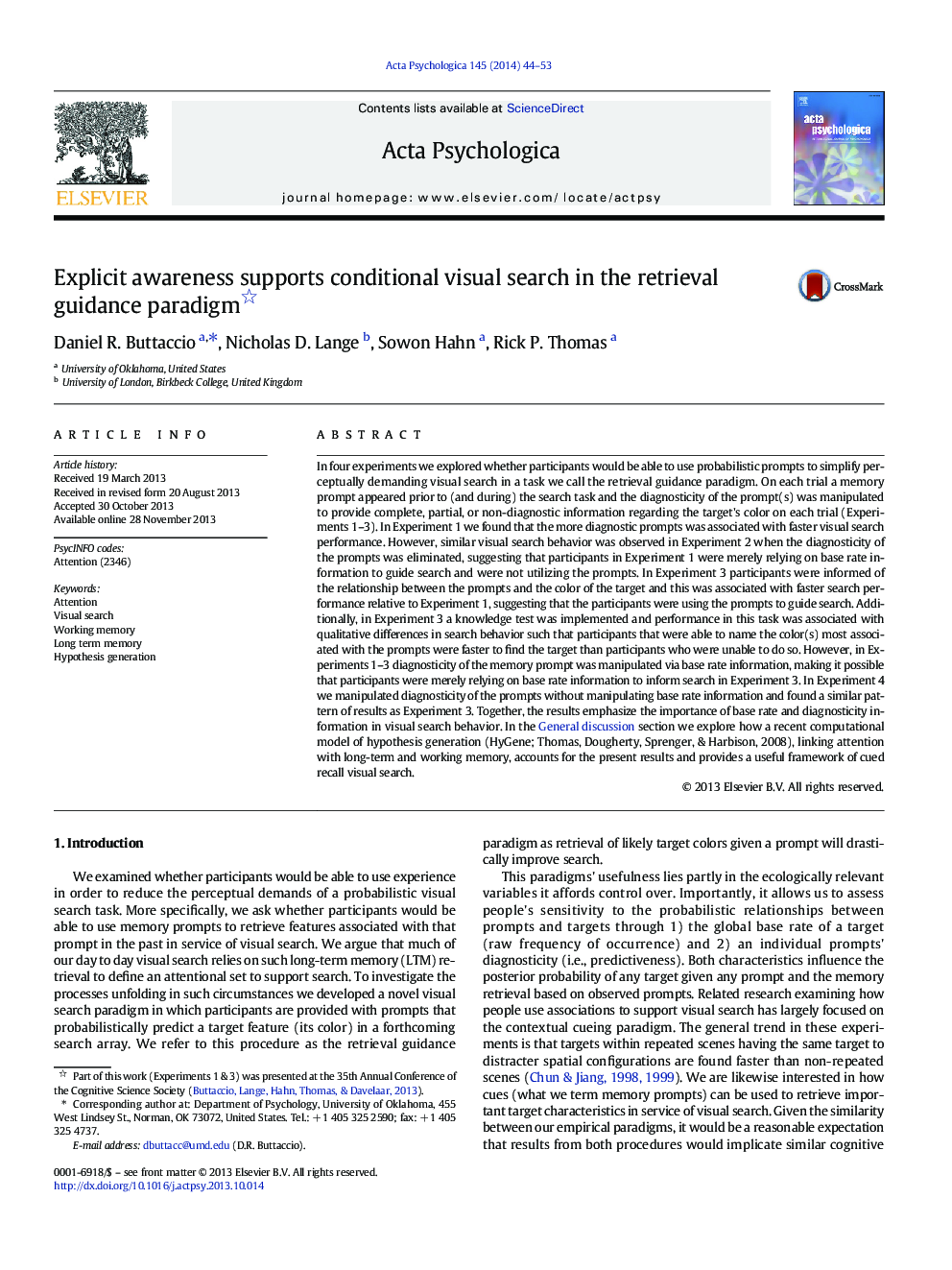| Article ID | Journal | Published Year | Pages | File Type |
|---|---|---|---|---|
| 919844 | Acta Psychologica | 2014 | 10 Pages |
•We examine whether participants use diagnostic memory prompts for visual search.•The memory prompts were probabilistically associated with target features.•Prompts used when relationship between the prompts and features is suggested•Only base rate target feature information used when utility of prompts not suggested•A memory model is used to account for the difference in experiments.
In four experiments we explored whether participants would be able to use probabilistic prompts to simplify perceptually demanding visual search in a task we call the retrieval guidance paradigm. On each trial a memory prompt appeared prior to (and during) the search task and the diagnosticity of the prompt(s) was manipulated to provide complete, partial, or non-diagnostic information regarding the target's color on each trial (Experiments 1–3). In Experiment 1 we found that the more diagnostic prompts was associated with faster visual search performance. However, similar visual search behavior was observed in Experiment 2 when the diagnosticity of the prompts was eliminated, suggesting that participants in Experiment 1 were merely relying on base rate information to guide search and were not utilizing the prompts. In Experiment 3 participants were informed of the relationship between the prompts and the color of the target and this was associated with faster search performance relative to Experiment 1, suggesting that the participants were using the prompts to guide search. Additionally, in Experiment 3 a knowledge test was implemented and performance in this task was associated with qualitative differences in search behavior such that participants that were able to name the color(s) most associated with the prompts were faster to find the target than participants who were unable to do so. However, in Experiments 1–3 diagnosticity of the memory prompt was manipulated via base rate information, making it possible that participants were merely relying on base rate information to inform search in Experiment 3. In Experiment 4 we manipulated diagnosticity of the prompts without manipulating base rate information and found a similar pattern of results as Experiment 3. Together, the results emphasize the importance of base rate and diagnosticity information in visual search behavior. In the General discussion section we explore how a recent computational model of hypothesis generation (HyGene; Thomas, Dougherty, Sprenger, & Harbison, 2008), linking attention with long-term and working memory, accounts for the present results and provides a useful framework of cued recall visual search.
